Living Wheat Free
Only wheat grains and ingredients made from wheat, need be avoided by those with a childhood wheat allergy. This makes ...
Read MoreImportant notice to customers — product packaging changesLearn More
NEW FOOD PACKAGING IN STORE NOW
From August 2018, customers will notice our rebranded food packaging start to appear on shelf in all major stockists.
 CURRENT Packaging
CURRENT Packaging

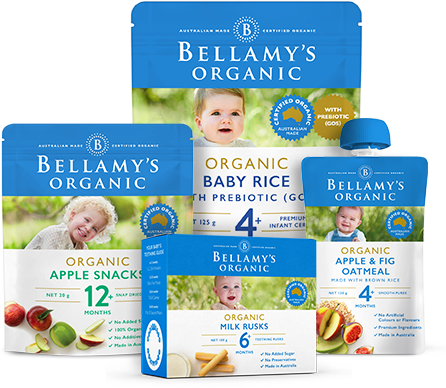 new Packaging
new Packaging
We are excited to announce our new packaging will start to appear on shelf from August 2018. This transition to new packaging will occur over a number of months. During this time there will be a mix of current and new packaging on shelf.
There are no major changes to these products, in some instances there is a small name change or slight recipe improvement, see below for the full details.
Products purchased via the website will be delivered to customers in our old packaging until the end of October. From November, products ordered from the website will be delivered in the new packaging.
Please note, our Infant Formula packaging will not be rebranded until later in 2019.
For any questions, connect with our team of accredited practising Dietitians on +61 3 6332 9200
Product name changes
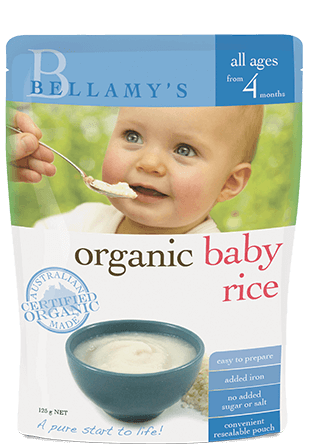 CURRENT Packaging
Organic Baby Rice
CURRENT Packaging
Organic Baby Rice

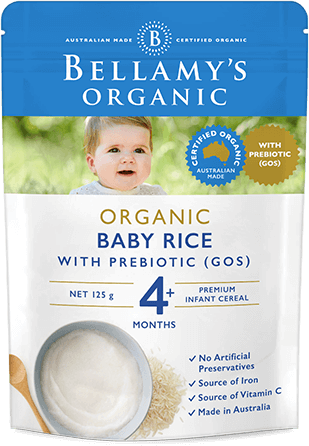 NEW Packaging
Organic Rice with Prebiotic (GOS)
Note: Our Baby Rice recipe has been upgraded to now include GOS Prebiotic
NEW Packaging
Organic Rice with Prebiotic (GOS)
Note: Our Baby Rice recipe has been upgraded to now include GOS Prebiotic
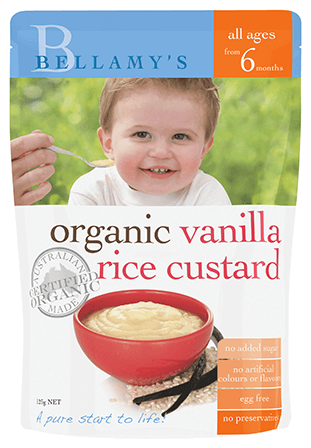 CURRENT Packaging
Organic Vanilla Rice Custard
CURRENT Packaging
Organic Vanilla Rice Custard

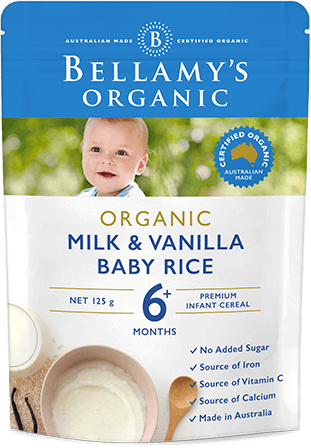 NEW Packaging
Organic Milk & Vanilla Baby Rice
NEW Packaging
Organic Milk & Vanilla Baby Rice
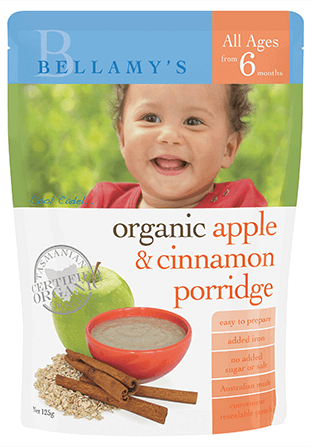 CURRENT Packaging
Organic Apple & Cinnamon Porridge
CURRENT Packaging
Organic Apple & Cinnamon Porridge

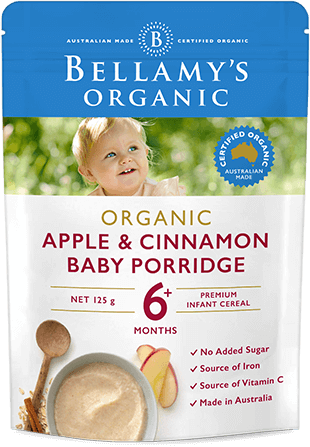 NEW Packaging
Organic Apple & Cinnamon Baby Porridge
NEW Packaging
Organic Apple & Cinnamon Baby Porridge
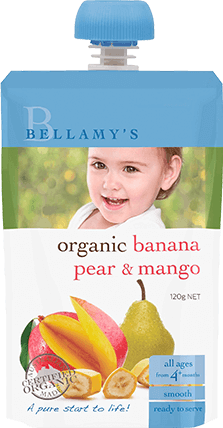 CURRENT Packaging
Organic Banana, Pear & Mango
CURRENT Packaging
Organic Banana, Pear & Mango

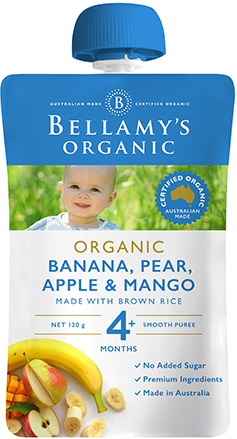 New Packaging
Organic Banana, Pear, Apple & Mango
New Packaging
Organic Banana, Pear, Apple & Mango
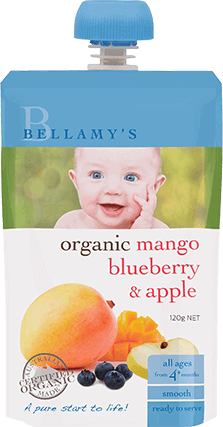 CURRENT Packaging
Organic Mango, Blueberry & Apple
CURRENT Packaging
Organic Mango, Blueberry & Apple

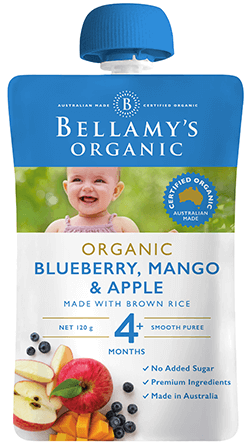 New Packaging
Organic Blueberry, Mango & Apple
New Packaging
Organic Blueberry, Mango & Apple
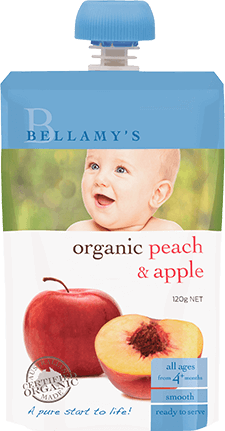 CURRENT Packaging
Organic Peach & Apple
CURRENT Packaging
Organic Peach & Apple

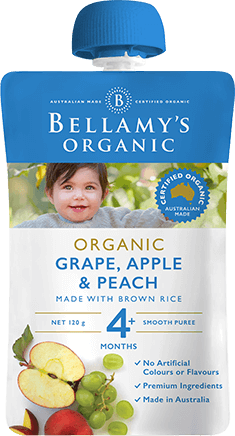 New Packaging
Organic Grape, Apple & Peach
New Packaging
Organic Grape, Apple & Peach
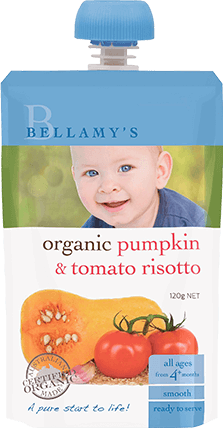 CURRENT Packaging
Organic Pumpkin & Tomato Risotto
CURRENT Packaging
Organic Pumpkin & Tomato Risotto

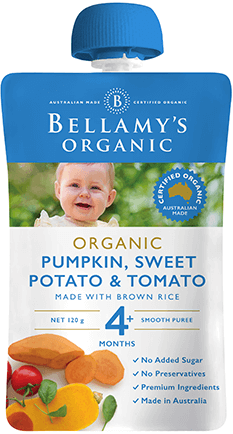 New Packaging
Organic Pumpkin, Sweet Potato & Tomato
New Packaging
Organic Pumpkin, Sweet Potato & Tomato
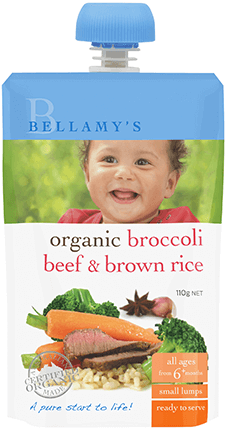 CURRENT Packaging
Organic Broccoli, Beef & Brown Rice
CURRENT Packaging
Organic Broccoli, Beef & Brown Rice

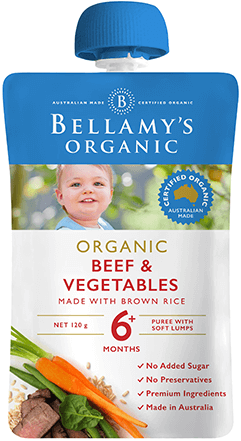 New Packaging
Organic Beef & Vegetables
New Packaging
Organic Beef & Vegetables
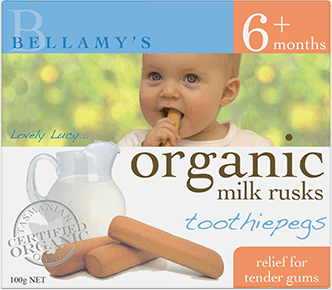 CURRENT Packaging
Organic Milk Rusks Toothiepegs
CURRENT Packaging
Organic Milk Rusks Toothiepegs

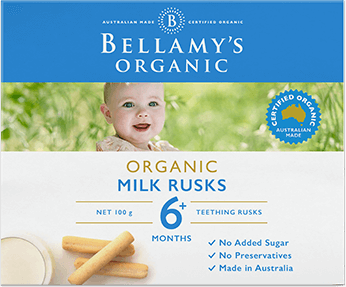 New Packaging
Organic Milk Rusks
New Packaging
Organic Milk Rusks
Parents are sometimes worried about giving common food allergens to their babies. However, it’s very unlikely that your baby will react so severely to a new food that they will need an emergency trip to the hospital. To put it further into perspective, food allergies occur in around 10% of babies in Australia. The chance of a severe allergic reaction such as anaphylaxis is much less.
So the latest health guidelines in Australia recommend that all babies should be given foods that are common food allergens including peanut butter, cooked egg, dairy, wheat products in the first year of life.
How should I introduce allergens?
Research shows it is best to offer these foods regularly starting at around six months of age (not before four mouths), and when your baby is ready.
Smearing food on your baby’s skin will not help to identify possible food allergies, but you can rub a small amount of the food on the inside of your baby’s lip as a starting point. If there is no reaction after a few minutes, you can start giving small amounts.
Introduce cooked egg (e.g. egg in muffins) and peanut butter in small amounts to start with. You can do this by mixing a small amount of hard-boiled egg or peanut paste (e.g. ¼ of a baby spoon) into your babies usually food (e.g. vegetable purée), and gradually increasing the amount (up to several spoons full). If the food is tolerated, continue to give this food regularly as part of their diet.
It’s best to introduce new allergen foods one at a time, around two days apart so you can easily identify if any foods cause a reaction. If a food causes a reaction, stop feeding your child that food.
Do I keep feeding my baby allergenic foods?
Once an allergen has been introduced safely, it is very important to keep offering and serving it in your baby’s foods at least twice a week to maintain tolerance.
What reactions should I look out for?
Allergic reactions usually appear very quickly, so parents can gauge reaction within a couple of hours following the meal.
Mild to moderate symptoms of food allergy include:
Severe allergic reactions (anaphylaxis) to foods include:
Less common symptoms of food allergy include colic, reflux, eczema, chronic diarrhoea and poor weight gain.
What should I do if my baby has a reaction?
If any mild to moderate reactions occur, do not give any more of the food, observe your child’s symptoms and seek advice from you baby’s doctor. If your baby has what could be a severe allergic reaction, call an ambulance.
How do I prevent allergies?
If possible, continuing to breastfeed during the period when solids are introduced may help reduce the risk of your baby developing allergies.
The best way to prevent food allergies is to introduce the most common allergenic foods to all babies early in life. If not introduced in infancy, the risk of an allergic reaction as a child gets older is increased. This applies even to babies who are at higher risk of allergy due to eczema, other food allergies or an immediate family history of an allergic condition.
Just remember the risk of a severe allergic reaction when eating a new food for the first time is extremely low and the majority of food allergies are not dangerous! Delaying the introduction might put children at higher risk of allergies, so it’s better to introduce early and not delay!
References
1. National Health and Medical Research Council. (2013). Eat for Health – Infant Feeding Guidelines Information for Health Workers. Available from: https://www.nhmrc.gov.au/about-us/publications/infant-feeding-guidelines-information-health-workers
2. ASCIA Guidelines – Infant feeding and allergy prevention. 2016. Available from: https://www.allergy.org.au/hp/papers/infant-feeding-and-allergy-prevention